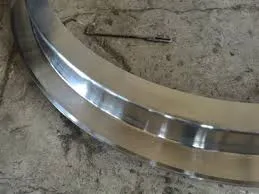ຕ.ລ. . 06, 2024 15:45 Back to list
single pass and multi pass heat exchanger
Single Pass and Multi Pass Heat Exchanger Understanding the Differences
Heat exchangers are essential components in various industrial processes, providing efficient thermal energy transfer between two or more fluids at different temperatures. Depending on the application requirements, heat exchangers can be designed in various configurations, with single pass and multi-pass designs being the most common. Understanding the differences between single pass and multi-pass heat exchangers is crucial for selecting the appropriate type for specific applications.
A single pass heat exchanger is designed so that the fluid flows through the heat exchanger only once. In this configuration, the hot and cold fluids typically flow in opposite directions — a setup known as counterflow. This design allows for effective temperature gradients, leading to better heat transfer efficiency compared to parallel flow configurations. As the fluids move through the heat exchanger, they exchange heat only once, which might limit the overall effectiveness, especially in applications where significant temperature changes are required.
On the other hand, a multi-pass heat exchanger consists of multiple channels or passes for one or both fluids. This setup enables the fluid to traverse the heat exchanger multiple times before exiting. Each pass allows for further heat exchange between the fluids, leading to improved thermal performance. Multi-pass heat exchangers can implement various flow arrangements, such as counterflow or crossflow, optimizing heat transfer based on the specific needs of the application.
single pass and multi pass heat exchanger

One of the significant advantages of multi-pass designs is their ability to achieve higher temperature changes with a smaller footprint. By providing multiple pathways for the fluid, they can increase the effective heat transfer area without requiring a larger unit. However, this complexity may also result in increased pressure drops and potential fouling, which can affect performance over time.
In terms of applications, single pass heat exchangers are often used in scenarios where space is limited or in processes with lesser heat transfer requirements. They are simpler in design and easier to maintain. Conversely, multi-pass heat exchangers are ideal for applications requiring high efficiency and significant thermal performance, such as in power plants, chemical processing, and HVAC systems.
In conclusion, choosing between a single pass and a multi-pass heat exchanger hinges on specific thermal requirements, space constraints, and budget considerations. While single pass exchangers offer simplicity and ease of maintenance, multi-pass designs provide enhanced efficiency and performance in critical applications. Engineers must evaluate these factors carefully to ensure optimal heat exchange solutions in their processes.
-
Centrifugally Cast Iron Water Main Pipe | Ductile Iron Solutions
NewsAug.24,2025
-
Durable Cast Steel Concrete Pipe Mold Bottom Rings & Base Trays
NewsAug.23,2025
-
Centrifugally Cast Iron Water Main Pipe for Reliable Mains
NewsAug.22,2025
-
Durable Centrifugally Cast Iron Water Main Pipe
NewsAug.11,2025
-
Centrifugally Cast Iron Water Main Pipes for Reliability
NewsAug.10,2025
-
High-Quality Centrifugally Cast Iron Water Main Pipes
NewsAug.09,2025


